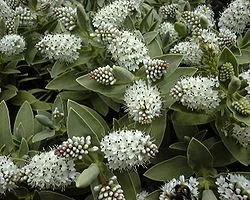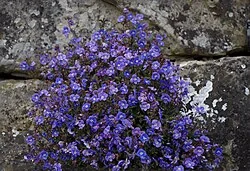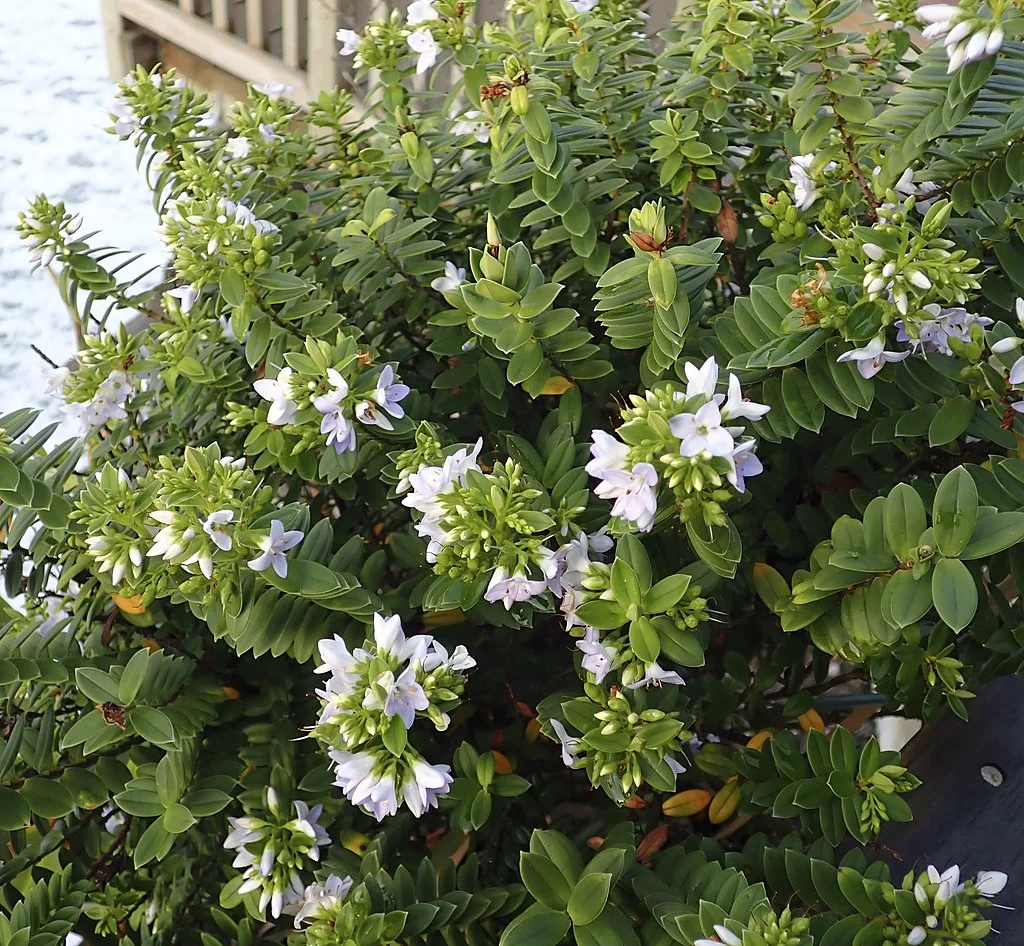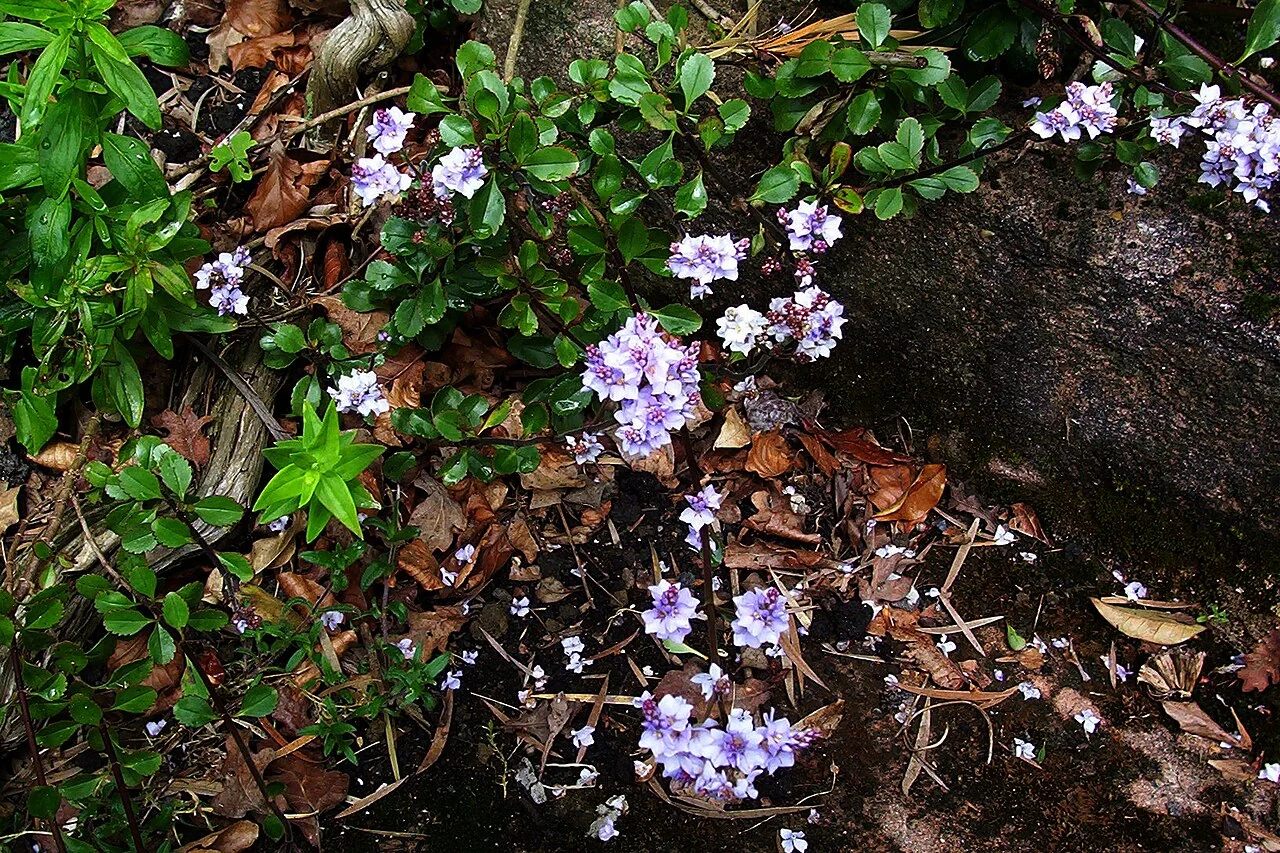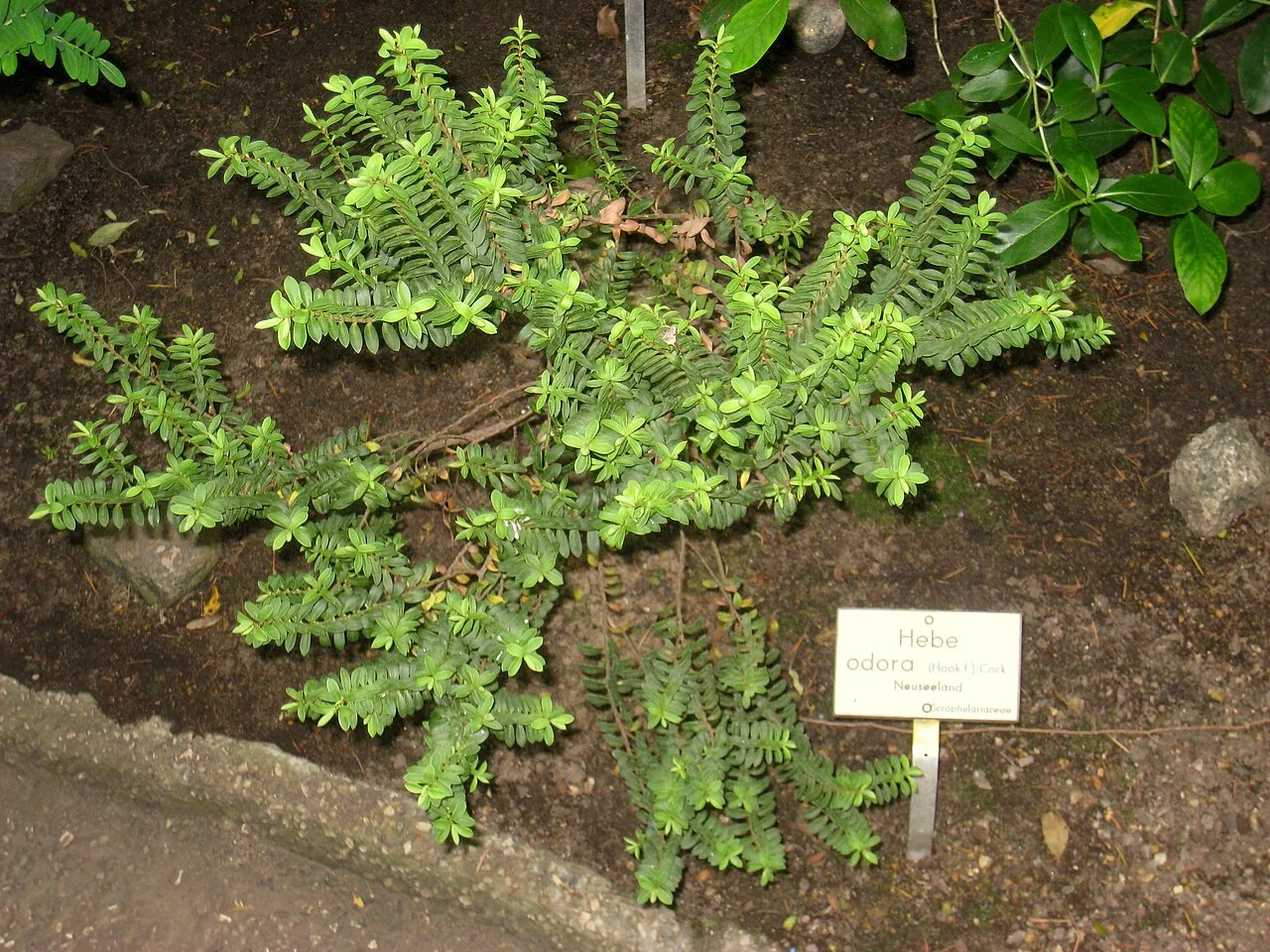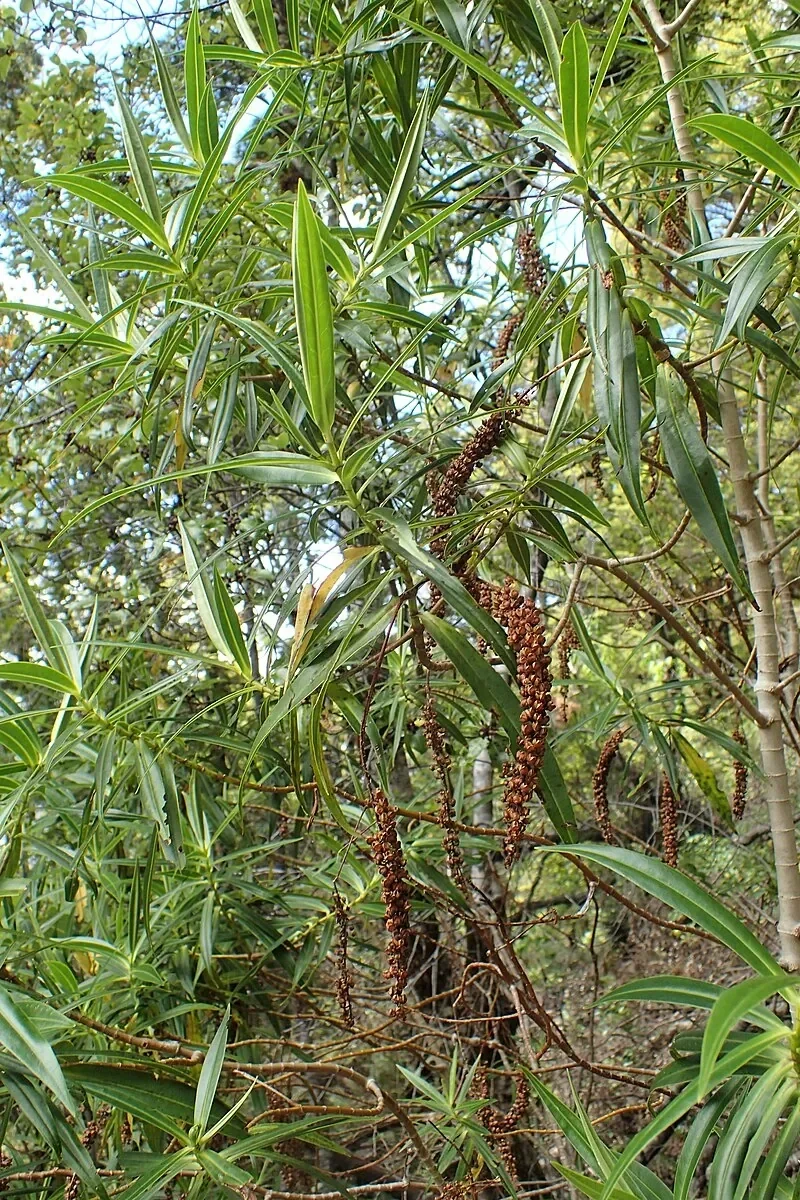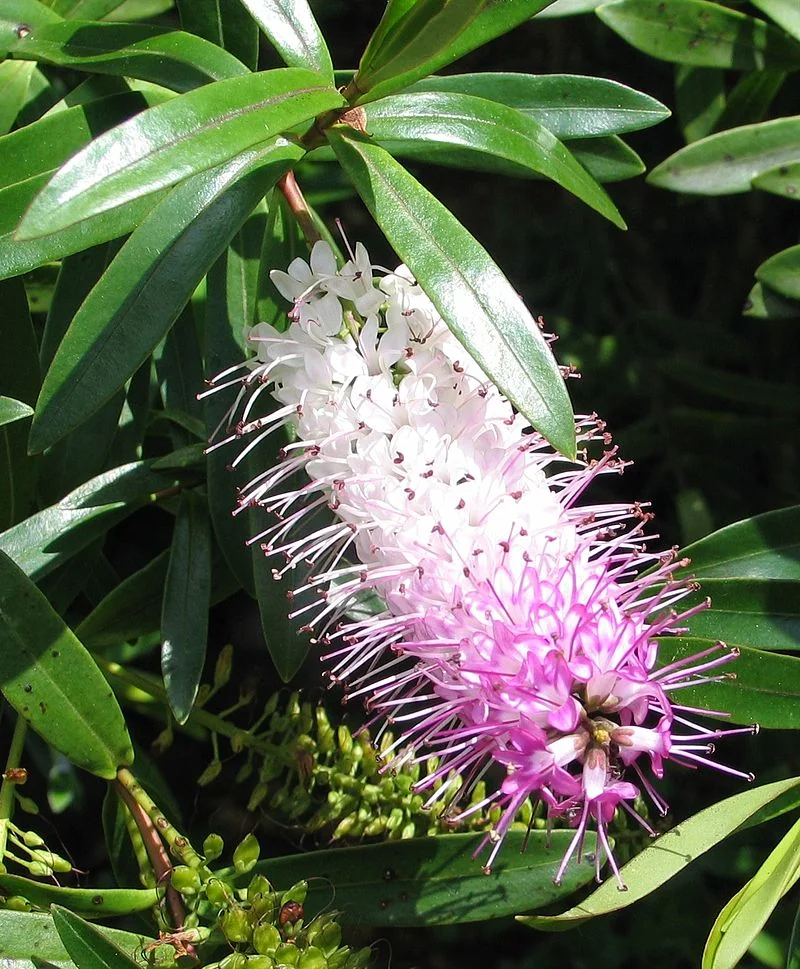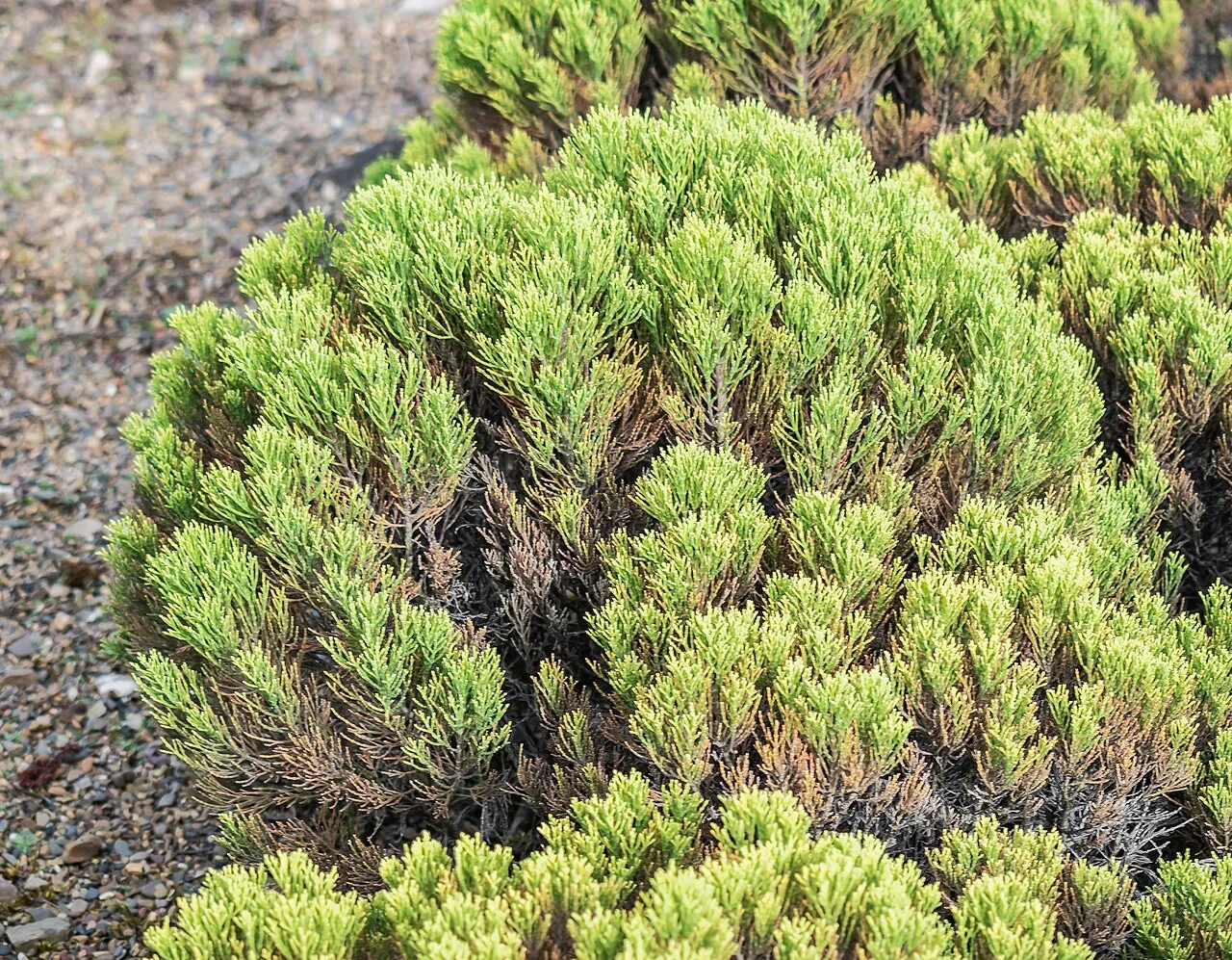
Cypress Hebe
Veronica cupressoides
Introduction
Cypress Veronica (scientific name: Veronica cupressoides ) is a distinctive native shrub that perfectly mimics the appearance of a coniferous tree with its dense, scale-like foliage. This slow-growing, compact plant is prized for its unique texture and year-round evergreen appeal, making it an excellent choice for rock gardens and native landscaping. Endemic to New Zealand, it's valued for its drought tolerance and architectural form. Explore more in the native plants index .

Cypress Hebe ( Veronica cupressoides ) is a native species valued in gardens and restoration for its form and resilience in suitable conditions. Learn more about native shrubs in our native plants guide .
Plant Description
Botanical Features
Cypress Hebe ( Veronica cupressoides ), also known as cypress hebe, is a rare, aromatic, bushy shrub endemic to the South Island of New Zealand. It typically grows between 2 to 4 feet tall, though it can reach up to 8 feet, exhibiting a dense, rounded form reminiscent of a dwarf cypress or juniper. The shrub features erect, whip-like branches that are green, grey-green, or glaucous, with thin, somewhat knobbly, and densely subdivided twigs. Adult plants bear scale-like leaves, measuring 0.8-2.0 mm in length, which are triangular or deltoid and lie flat against the stem. These persistent leaves are often dusty green or glaucous and emit a turpentine scent when crushed. Younger plants, or occasional branches on older ones, may have larger leaves (up to 1/4 inch long) that are narrowly oblong, ovate, or obovate, with margins ranging from entire to irregularly lobed. Small clusters of 2-22 flowers emerge at the branch tips, usually in midsummer. These hermaphroditic flowers are mostly sessile and can be pale blue, violet/purple, pink, or white, distinguished by their long, projecting filaments. The plant produces a dry, rounded capsule.
Quick Facts
Essential Information
| Scientific Name | Veronica Cupressoides |
|---|---|
| Height | 1 - 2 m |
| Spread | 1 - 1.5 m |
| Water Needs | Low; very drought-tolerant once established |
| Light | Full sun |
| Frost Tolerance | Very high |
| Salt Tolerance | Low |
| Growth Rate | Slow to moderate |
| Lifespan | Long-lived shrub |
Climate Best Suited to
Cypress Hebe is native to the cold, dry, intermontane basins of the South Island. It is exceptionally hardy and thrives in climates with cold winters and dry summers. It is an excellent choice for gardens in Central Otago and the Mackenzie Basin.
Regional Suitability
| Whangārei | Ideal |
| Auckland | Ideal |
| Hamilton | Suitable |
| Rotorua | Suitable |
| Tauranga | Ideal |
| Gisborne | Ideal |
| New Plymouth | Ideal |
| Whanganui | Ideal |
| Palmerston North | Suitable |
| Napier | Ideal |
| Wellington | Ideal |
| Nelson | Ideal |
| Christchurch | Suitable |
| Dunedin | Suitable |
| Invercargill | Suitable |
| City | Climate Suitability |
|---|
Natural Habitat
Cypress Hebe ( Veronica cupressoides ), also known as cypress hebe, is a rare, aromatic, bushy shrub endemic to the South Island of New Zealand. It is specifically found east of the Main Divide from Lewis Pass south to Otago.
Key Habitats Include:
- Montane Shrublands: It thrives in montane shrublands, typically at elevations ranging from 300 to 1372 meters.
- Diverse Sites: Its natural habitat includes a variety of environments such as disturbed areas (recently affected by flooding or slips), rock outcrops, bouldery moraines, and terraces. It is also a component of grey scrub communities.
- Intermontane Basins: The plant is well-adapted to cold, dry, intermontane basins, experiencing cold winters and dry summers. It is often found near lakes and streams in these regions.
Preferred Conditions:
- Soil: It prefers exceptionally well-draining, gritty soil, mimicking the rocky or sandy loams of its native environment. Good drainage is paramount to prevent winter wet and waterlogging.
- Light: It performs best in full sun, especially in cooler climates, to maintain its dense, cypress-like foliage and encourage flowering. In hotter regions, it can benefit from light afternoon shade.
The unique cypress-like foliage and adaptation to harsh, dry, and cold conditions of Veronica cupressoides underscore its ecological importance in contributing to the biodiversity and structural complexity of New Zealand's montane landscapes.
Plant Conservation
Veronica cupressoides , also known as cypress hebe, is a rare shrub endemic to the Eastern South Island of New Zealand. Its current conservation status is "Threatened - Nationally Endangered" with qualifiers CR, PF, and RF, as of 2023. The plant is found in grey scrub communities, including sites influenced by disturbance like river flooding and slips, as well as more stable areas such as rock outcrops and bouldery moraines. Key threats to the conservation of Veronica cupressoides include: habitat loss and modification, recruitment failure due to invasive herbaceous plants, grazing by domestic stock and wild animals, and vulnerability to local extinction from events such as river flooding and fire, especially since the species is highly flammable. Conservation efforts and management opportunities include surveying for new locations, marking known sites, protecting habitats, collecting seeds for propagation and re-establishment, and raising awareness.
Growing Requirements
Soil Requirements
Cypress Hebe ( Veronica cupressoides ) demands exceptionally well-draining, gritty soil. It thrives in rocky or sandy loams, mimicking its natural habitat in montane shrublands, rock outcrops, and bouldery moraines of the South Island. Good drainage is paramount to prevent winter wet and waterlogging, which can be detrimental.
Light Requirements
Cypress Hebe performs best in full sun, especially in cooler climates, to maintain its dense, cypress-like foliage and encourage flowering. In hotter regions, it can benefit from light afternoon shade to prevent stress.
Water Requirements
Once established, Cypress Hebe is remarkably drought-tolerant and has low to moderate water needs. While it appreciates consistent moisture during dry periods, it is crucial to avoid overwatering and ensure the soil dries out between waterings.
Planting Guide
Veronica cupressoides , also known as Cypress Hebe, is a hardy, low-maintenance evergreen shrub native to New Zealand's South Island, prized for its cypress-like foliage and drought tolerance. It typically grows to a height and spread of 1 to 1.5 meters, with some cultivars being smaller, and has a slow to moderate growth rate, reaching its ultimate size in 5-10 years.
1. Growing Requirements:
- Soil: This plant demands exceptionally well-draining, gritty soil. It thrives in rocky or sandy loams, mimicking its natural habitat. It can tolerate a range of well-drained soils, preferably poor to moderately fertile, and neutral to slightly alkaline pH.
- Light: Veronica cupressoides performs best in full sun to maintain its dense foliage and encourage flowering. In very hot climates, light afternoon shade can be beneficial. It can also tolerate partial shade.
- Water: Once established, Cypress Hebe is remarkably drought-tolerant and has low to moderate water needs. Water sparingly during prolonged dry periods, ensuring excellent drainage. A weekly watering regimen is essential for its health, but avoid oversaturation.
2. Climate and Hardiness:
- It is exceptionally hardy and thrives in climates with cold winters and dry summers, making it an excellent choice for regions like Central Otago and the Mackenzie Basin in New Zealand.
- It is hardy through most of the UK, tolerating temperatures down to -10 to -15°C (H5 hardiness rating).
- Protect it from cold, drying winds in colder areas, and consider winter protection with dry mulch.
3. Planting Locations:
- Veronica cupressoides is well-suited for rock gardens, gravel gardens, city and courtyard gardens, and native landscaping.
4. Pruning:
- Minimal pruning is generally required due to its naturally neat and compact growth habit.
- Pruning is primarily for aesthetic purposes, to maintain its shape, or to remove any unhealthy growth.
- Remove any dead, damaged, or diseased branches as needed.
- A light trim in spring can help maintain a dense, compact shape. Avoid cutting back into old, bare wood, as it may not regenerate well.
- If pruned immediately after flowering, it may produce a second flush of flowers later in the season.
5. Propagation:
- Veronica cupressoides can be propagated by seed or by semi-hardwood cuttings.
- Semi-hardwood cuttings can be taken in late summer or autumn.
- Mid-spring is ideal for division, using 2-3 year-old plants. For cuttage, take shoots in late spring or summer, keep soil moist until rooted, then transplant when the seedling is large enough.
- It is also easy to propagate from hardwood cuttings and fresh seed, and flowering plants in cultivation often produce numerous spontaneous seedlings.
6. Pests and Diseases:
- It may be susceptible to aphids.
- It can be susceptible to downy mildews, fungal leaf spot, fungal rot, Phytophthora, and sometimes honey fungus. It is also a high-risk host for Xylella fastidiosa .
7. Fertilization:
- Cypress veronica requires minimal fertilization. A water-soluble fertilizer with a ratio of 20-10-20 during growth and 10-30-20 before flowering is recommended. Reduce fertilization in early fall and avoid it during recovery to prevent root damage.
Ecological Role
Alpine Shrubland Support
This tight, cypress-like hebe forms wind-shorn cushions and low shrubs in high country, offering nectar for pollinators and shelter for invertebrates and lizards among rocks and scree.
Uses and Significance
Landscaping Applications
- Rock Gardens: Its form and drought tolerance make it a perfect specimen for rock or gravel gardens.
- Structural Planting: Use it for architectural contrast against softer-leaved plants.
- Low Hedges: Can be clipped to form a unique, textured, low hedge.
- Conservation: Once thought to be extinct in the wild, its cultivation has been vital for its conservation.
Cultural Significance
Traditional Uses and Values
While specific cultural significance for Veronica cupressoides is not widely documented, the genus name "Veronica" is often believed to derive from the Latin "vera iconica" (true image) or from the Macedonian name Berenice, meaning "bearer of victory." It is also associated with Saint Veronica, who, according to tradition, gave Jesus her veil to wipe his brow. This refers to the broader genus and not specifically to Veronica cupressoides . The plant is valued in gardening and restoration for its unique form, resilience, and drought tolerance, making it suitable for rock gardens, structural planting, and low hedges. Its cultivation has also been vital for its conservation, as it was once thought to be extinct in the wild.
Landscaping Ideas
Rock and Scree Gardens
Plant in raised, free-draining beds and rock crevices to showcase its tight form. Mix with grey-leaved alpine grasses and compact Hebe species for a cohesive, wind-hardy look.
Seasonal Care
Cypress Hebe ( Veronica cupressoides ) is a remarkably hardy and low-maintenance shrub, well-adapted to the dry, cold environments of its native South Island. Its care focuses on providing excellent drainage and ample sunlight, with minimal intervention.
Spring
- Active Growth: Spring is when new growth emerges.
- Planting: This is an ideal time for planting new specimens, allowing them to establish before summer.
- Tidying: Remove any dead or damaged foliage from the previous season to encourage fresh growth.
- Fertilizing: Avoid heavy fertilization. If growth appears weak, a very light application of a balanced, slow-release fertilizer can be considered, but often none is needed.
Summer
- Flowering: Small, delicate pale lilac or white flowers may appear in summer.
- Watering: Once established, it is very drought-tolerant. Water sparingly during prolonged dry periods, ensuring excellent drainage.
- Light: Ensure full sun exposure for best foliage colour and flowering. In very hot climates, light afternoon shade can be beneficial.
Autumn
- Watering: Reduce watering frequency as temperatures cool and growth slows. Ensure good drainage to prevent winter wetness.
- Propagation: Semi-hardwood cuttings can be taken in late summer or autumn.
Winter
- Frost Tolerance: Cypress Hebe is very frost-hardy and generally requires no special winter protection in suitable climates.
- Watering: Water very sparingly, only when the soil is dry to the touch, as the plant is dormant and susceptible to root rot in cold, wet conditions.
Pruning
Techniques and Timing
Cypress Hebe ( Veronica cupressoides ) generally requires minimal pruning due to its naturally neat and compact growth habit. Pruning is primarily for aesthetic purposes, to maintain its shape, or to remove any unhealthy growth.
- Maintenance Pruning: Remove any dead, damaged, or diseased branches as needed. This helps to maintain the plant's health and appearance.
- Light Shaping: A light trim in spring can help to maintain a dense, compact shape. Avoid cutting back into old, bare wood, as it may not regenerate well.
- Avoid Heavy Pruning: This hebe does not typically require heavy pruning. Excessive pruning can stress the plant and disrupt its natural form.
- Timing: Pruning can be done in spring, after the risk of heavy frost has passed, or after its summer flowering period.
- Tools: Always use clean, sharp tools when pruning to minimize disease risk.
How to Grow Cypress Hebe
Cypress Hebe is a remarkably tough and adaptable shrub, but it has specific requirements that need to be met for it to thrive. Its natural habitat in the dry, cold, intermontane basins of the South Island gives a strong indication of its preferences. It is an excellent plant for rock gardens, scree beds, and other areas with sharp drainage. Its unique, cypress-like foliage provides year-round texture and interest, and it can be used as a specimen plant, in groups, or even as a low, informal hedge.
From Cuttings
Propagation from cuttings is the most common and reliable method for Cypress Hebe. Take semi-hardwood cuttings in late summer or autumn. The cuttings should be 6-8 inches long and taken from healthy, vigorous growth. Remove the lower leaves and dip the base of the cuttings in a rooting hormone to improve the strike rate. Plant the cuttings in a free-draining mix of sand and peat or a similar medium. Keep the cuttings in a cool, sheltered position, and ensure they are kept moist but not waterlogged. Rooting can take several months, and the young plants should be potted on and grown for a season before being planted out into their final position.
From Seed
Cypress Hebe can also be grown from seed, although this is a slower method and the resulting plants may show some variation. Fresh seed will give the best results. Sow the seed in a tray of well-draining seed-raising mix in autumn. The seeds require a period of cold stratification to break their dormancy, so leaving the seed tray outdoors in a sheltered spot over winter is ideal. The natural cold of winter will trigger germination in the spring. Once the seedlings are large enough to handle, they can be pricked out and potted into individual containers to grow on.
Pests and Diseases
Generally Trouble-Free
When grown in the right conditions (full sun, excellent drainage), Cypress Hebe is largely resistant to pests and diseases. Root rot can be an issue in heavy, wet soils.
Bonus Tip
Expert Growing Advice
Cypress hebe ( Veronica cupressoides ) responds well to a late-winter shear that lightly clips the outermost sprays - this maintains the tight, cypress-like silhouette and prevents gaps, especially after snowfall or high winds.
